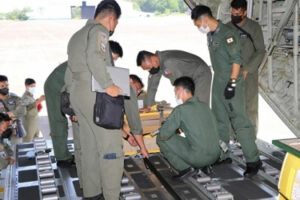Organizations provide lifeline to persons with HIV

TO END the acquired immunodeficiency syndrome (AIDS) epidemic affecting over 85,000 Filipinos, agencies and groups from various sectors renewed their commitment to deliver prevention and treatment services to persons living with human immunodeficiency virus (PLHIV).
“Keeping people on HIV treatment, we had to contend with the challenges around mobility, especially during our lockdowns,” said Teresita Marie P. Bagasao, country director of an epidemic control project funded by the US President’s Emergency Plan for AIDS Relief (PEPFAR) and the US Agency for International Development (USAID).
At a forum on AIDS control held Dec. 1, World AIDS Day, she cited the importance of partnering with community-based organizations like HIV & AIDS Support House, LoveYourself, and Lakan Community Center.
“We knew that services had to be brought to the clients. Our work could only be useful if we were to bridge essential HIV prevention, testing, and care to them,” she added.
LoveYourself, Inc., expanded operations to six community centers this November. Four are already operational — Athena in North Caloocan, Bagani in Bacolod City, Luxecare Starmall EDSA-Shaw, and Luxecare Alabang. A center in Baguio and a center for the Home for the Golden Gays will be finished by first quarter of 2022.
LoveYourself shifted testing and treatment services online due to the still-ongoing pandemic, with clients able to book in-person appointments and telehealth consultations online. Medicine refills are also possible through their Xpress service.
As of this March, more than 85,000 cases of HIV/AIDS were reported in the Philippines, based on data from the Department of Health (DoH).
At the end of 2020, DoH and the Philippine National AIDS Council detected 22 new HIV daily, lower than the pre-pandemic 36 cases per day. However, this decrease was due to a lack of access to testing, according to DoH Disease Prevention and Control Bureau Director Beverly Lorraine C. Ho.
“The pandemic has taught us to bring services closer to the people,” she said, referring to health literacy, outreach, telemedicine, and both primary care and specialist services.
Of the 70% of Filipino PLHIV found through testing, 61% are alive due to ART (antiretroviral therapy), which is the intake of multiple antiretroviral drugs in order to control HIV infection. The goal is to increase this to 95%, said Dr. Ho.
DoH, through an P875-million initiative with USAID and PEPFAR launched this year, is scaling up case-finding and anti-stigma counseling efforts in the Philippines and providing HIV prevention drugs known as pre-exposure prophylaxis. — Brontë H. Lacsamana




